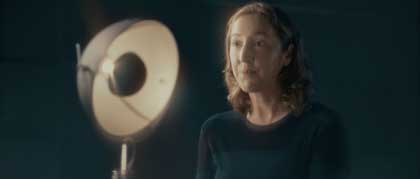ASTROPHYSICS
University College Dublin’s Associate Professor Sheila McBreen studies these bursts, having spent years investigating them both in Dublin and while based at the Max Planck Institute in Germany. She was part of the international research team that in 2017 delivered a remarkable double, for the first time detecting a gamma-ray burst and the resultant gravitational wave triggered by the same cataclysmic event.
It was her interest in these mysterious explosions in space and what caused them that originally drew McBreen into a career in astronomical research. “Gamma-ray bursts are the most powerful explosions we know of. They are far away and produce seconds or minutes of gamma-rays,” she explains.
For many years the challenge was being able to detect and localise them before the explosion was over. “A short gamma-ray burst comes from merging neutron stars – less than a second to two seconds. Long bursts come from the death of a massive star to form a black hole. These last for seconds and sometimes for several minutes” she says.
This makes them notoriously difficult to study. She likens it to trying to map a forest using a lightening flash as a light source. It is bright enough to light up all the trees at once, just as a burst lights up a galaxy location, but the flash is gone in seconds, dropping everything back into darkness. After the explosion, the afterglow will fade slowly over a few days and observers have to be very fast to locate and study the galaxy.
“She was part of the international research team that in 2017 delivered a remarkable double, for the first time detecting a gamma-ray burst and the resultant gravitational wave triggered by the same cataclysmic event”
“Albert Einstein predicted gravitational waves a century ago but it was not until August 17, 2017, that gravitational waves were detected at almost the same time as gamma-rays from the one cosmic event, the merger of two neutron stars.“
Scientists in Europe and the US including McBreen have helped to develop specialised satellites designed to detect gamma-ray bursts and study them.
The Fermi satellite is just such a spacecraft, which hosts the Gamma-ray Burst Monitor, an instrument developed as an international collaboration between NASA and the Max Planck Institute for extraterrestrial physics in Germany. McBreen worked at the institute where Fermi’s Gamma-ray Burst Monitor was developed and later as data began to come through. Although based at UCD she remains a Fermi team member.
It is for this reason her name is included in the list of contributors to the ground-breaking research that matched up the detection of a burst with the near simultaneous arrival of a gravity wave, both triggered by the same burst event.
Albert Einstein predicted gravitational waves a century ago but it was not until August 17, 2017, that gravitational waves were detected at almost the same time as gamma-rays from the one cosmic event, the merger of two neutron stars.
“As a gamma-ray burst event it didn’t look very interesting,” recalls McBreen. “It was faint, but when found coincident with the gravitational wave source then that was different.” Fermi and the INTEGRAL space telescope studied light coming from the burst, while gravity wave detectors LIGO in the US and Virgo in Europe captured data from the passing wave. “Telescopes all around the world chased it. It was a fantastic result for the LIGO and Virgo team, for Fermi and ground-based observers,” she says.
Astronomers had waited a long time for such a result, but making this kind of discovery can only be achieved by investing beforehand in the equipment and the people. “You have to be lucky but you won’t get very far if you are not prepared,” says McBreen.
Being able to see these events can tell us a great deal, for example about galaxy formation. “Essentially you are looking back in time, sometimes you are seeing events that happened when the universe was very young” she says.
They are now detecting about 250 gamma-ray bursts a year, but not all are followed up in detail. “The international dimension is really important, teamwork is really key. You have to be able to work on a team if you want to do anything on the space science side,” she says.
“You spend a lot of time doing standard things, working on detectors and such, then there are eureka moments like when gravitational waves and gamma-rays were detected from the same source. This is exciting, this is what it is all about,” she says. “You are part of a huge international collaboration and this helps to attract and educate students who will go on to drive science and industry in Ireland.”
Those same students at UCD are learning about space science by doing – putting Ireland’s first satellite into earth orbit. A shoe box sized satellite being developed in UCD by physicists, engineers and maths students, may in time contribute to our understanding of how the universe works by capturing data from gamma-ray bursts.
EIRSAT-1 and its onboard experiment GMOD will peer into the cosmos, ready to detect these explosions by the gamma radiation they blast out into space, explains McBreen. She is an academic in the 10 strong Space Science and Materials Research Group within the UCD School of Physics, and has a passion to get Ireland into space with its own satellite.
The miniaturised satellite – or CubeSat – measures no more than 10cm by 10cm by 20cm and will fly on board a European Space Agency launcher as part of the agency’s “Cubesats – Fly Your Satellite!” programme. GMOD will carry the next generation of detectors needed to capture these powerful events.
The work at UCD received a boost recently when McBreen received a €500,000 career development award from Science Foundation Ireland; money that will keep her team of students in place at UCD. Taking part in the project provides great opportunities for the students, says McBreen. “Building things is important, it develops the skills needed to understand what is going on along with being able to capture and analyse data. It is important to have both paths together,” she argues.
“Essentially you are looking back in time, sometimes you are seeing events that happened when the universe was very young.”

UCD School of Physics
Science Centre North,
Belfield, Dublin 4,
Ireland
T: +353 1 716 2237
E: sheila.mcbreen@ucd.ie
Assoc. Professor Sheila McBreen
Sheila McBreen is an Associate Professor in the UCD School of Physics. She completed her PhD in 2004 on the subject of the prompt emission of gamma-ray bursts (GRBs) detected with NASA’s Compton Gamma-ray Space Observatory.
After graduation, she worked as a Research Fellow in the European Space Agency (ESA) in The Netherlands focusing on high-energy observations of extragalactic sources.
In 2006, she was awarded a Marie Curie Fellowship from the European Union and moved to the Max Planck Institute for extraterrestrial physics (MPE) in Munich. While at MPE, she joined the Gamma-ray Burst Monitor (GBM) team and continues to be an active team member. The GBM is an instrument on NASA’s Fermi Gamma-ray Space Telescope.
Her interests include gamma-ray bursts, their afterglows and host galaxies, terrestrial gamma-ray flashes and developing instrumentation for the next generation gamma-ray space mission. Additionally, she is co-founder and CTO of Parameter Space Ltd, a UCD spin-out company.
Her research has received funding from Science Foundation Ireland (SFI), European Space Agency (ESA), and the Irish Research Council (IRC).
Top page image: horsehead_deepskywest © Dr Antonio Martin-Carrillo, UCD School of Physics


